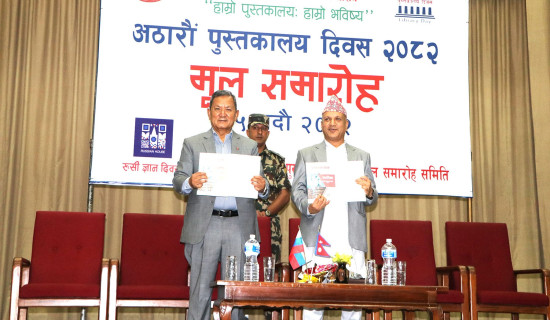- Sunday, 31 August 2025
Food Utensils Can Impact Wellness
Time is a testimony to the transition of materials used in food utensils. Technological advancement and rising awareness towards wellness is fueling these changes. From ancient metalware to modern-day synthetic polymers, utensils have graduated with phase-wise predominance. Ironically, in a quest for sustainable and healthy alternatives, consumers are also backtracking to adopt time-tested materials in foodwares. A review article on Ayurveda published in 2022 highlights the therapeutic role of metal like gold, silver, copper, brass, bronze and iron in food.
While finding solace in antiques and innovations, how often do we seek clarity on the health implications? Issues around leaching of microplastics and trace metals from containers into the food is a rising concern. It’s time we understand the interactions between utensil materials, food and health rather than being solely influenced by traditional narratives and market trends. Chronologically, materials like mud, stones, cast iron, copper, brass, bronze, aluminum and steel have been largely used for making cooking vessels. These along with leaves, wood, ceramics, glass and plastics have been used for storing and serving food. The royalties and elites have dined in gold and silver crockeries.
Brass cookware
Cooking in a cast-iron vessel has always been considered a traditional means of supplementing natural iron in food. Ayurveda links the benefits of copper or “Tama” to the functioning of the brain, thyroid glands and cardiovascular system. Rightfully so, the age-old practice of storing water overnight in copper jars still continues in some homes. Brass, an alloy of 70 per cent copper and 30 per cent zinc, flourished in the Indus Valley Civilisation around 2600 BC. Slightly reactive to acidic food, brass also known as “Pittal” in Nepal, is not so old anymore.
There is a newfound lure for brass cookware due to its aesthetic appeal and inherent antimicrobial properties. Bronze or “Kansa,” also known as “Charesh” in Nepal, fares well with acidic food and is considered ideal for food. An alloy of 80 per cent copper and 20 per cent tin, its use is recommended in Ayurveda for holistic healing. Serving food in “Kansa” dinnerware is an identity of the “Thakali” community in Nepal. Today, people across communities are integrating bronze in their kitchenware.
Aluminum, one of the longstanding metals used in cooking vessels, is not advised by Ayurveda in food. Global food safety standards recommend the use of commercial grades of stainless steel in industrial food processing. Stainless steel grades SS 304 and SS 316 are often used in dairy equipment. Stainless steel, a metal alloy, contains iron as the base metal, chromium as the corrosion-resistant entity and nickel that imparts resistance to acidity and alkalinity.
The last few decades have witnessed a growing consumer affinity towards plasticware. US FDA (United States Food and Drug Administration) approved food grade plastic materials include HDPE (High density polyethylene), LDPE (Low density polyethylene), PET (polyethylene terephthalate) and PP (Polypropylene). The hygiene aspects of food served in earthenware is crucial. The use of glass, an inert material suitable for microwave heating, has been timeless. Similarly, ceramics and porcelain utensils continue to shine through generations.
Brewing speculations around the leaching of trace metals is concerning. A gradual shift from aluminum to stainless steel is underway. Published research, however, infers that metal grades, cooking time, cooking cycle and food ingredients can still impact leaching of nickel and chromium from stainless steel cookware. EFSA (European Food Safety Authority) has established an acceptable daily intake of copper to be 0.07 milligrams per kg body weight for an adult. Excess copper can act as a haemolytic agent. Copper toxicity manifests as migraine, hypertension and liver damage.
The use of plastic in food has always been under scrutiny. A review paper published in Springer Nature, 2021 infers that microplastic contamination in food may trigger an immune response and developmental toxicity. Emerging practices like the use of silicon liners in air-fryers or the random use of plastic containers during microwave heating may require regulatory vigilance. Toxicity has been associated with breakdown polymers of Teflon-coated nonstick cookware, which have been subjected to excessive heat.
Emerging challenges
Melamine, a component of plastic resin, if ingested in excessive amounts, can act as a neurotoxicant and disrupt the endocrine system. A 2011 research publication by Elsevier links repeated microwaving of melamineware or use of acidic food to outward migration of melamine and formaldehyde. The issue of melamine poisoning in baby milk powder in China was a global news story in 2008. As per a review article published in “Toxicology Letters” in 2018, the infant formula contained overtly high levels of melamine that led to grave illness, mostly around renal functioning of more than 3,00,000 infants, along with some fatalities as well. Today, safer alternative materials like paper, leaves and bamboo products are being adopted. Stainless steel water storage tanks are replacing the plastic ones. Stainless steel and wooden chopping boards are in vogue now. Similarly, melamine crockeries are being replaced by ceramic and porcelain.
As wellness and sustainability steer modern society towards new choices, assurance of food safety is crucial. A legacy of materials has adorned utensils but there is a dearth of validated information in the public domain related to ideal food and metal combinations. The fine line between the goodness of leached trace metals in food and the risk of metal toxicity due to prolonged ingestion needs elaboration. These, along with emerging challenges like microplastics, need to be addressed through appropriate risk assessment models. Here, the role of the state, academia, research organisation and consumer forum would be pivotal. While innovations seamlessly merge into our daily lives, it’s time to collaboratively demystify the seemingly present gaps in information so that consumers can navigate ahead in a more informed manner.
(The author is a Food Technologist: monicakpg@yahoo.com).

















